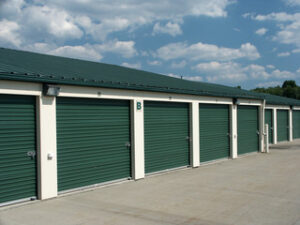A worldly general contractor’s day is a jigsaw of big and small tasks. They take on various roles within construction and are adept at pivoting between them with finesse and fluidity.
GCs find sub-contractors to complete specialized construction work using several methods, including drawing on past relationships and professional connections at industry events and trade shows. Many states also regulate licensing standards to boost trustworthiness and ensure regulation compliance. Contact General Contractors Lexington KY now!

When you’re building a home, commercial space or new office, you need someone to make it happen. And that’s where the general contractor comes in. This multifaceted professional wears many hats and wields the toolbelt of leadership, mediation, and an expert understanding of a structure’s symbiotic relationship between design and functionality. From navigating zoning laws to negotiating material prices, they are the pillars of project management that keep gears moving and budgets on track, while ensuring client contentment.
They manage the overall construction of a site and oversee all the different contractors, workers and tradespeople that are needed to complete each part of the work. They typically have their own laborers and carpenters that “self-perform” some of the work, but GCs also use specialty subcontractors for the majority of the work (plumbing, electricians, roofers, drywall installers, etc).
To ensure a smooth workflow, a good GC will make sure all materials and supplies are ordered in advance. And he or she will coordinate the schedule of each trade to make sure all workers are on the jobsite when they’re needed. This keeps projects on schedule and avoids expensive delays.
General contractors find subcontractors through several approaches, including drawing on relationships with professionals they’ve worked with in the past or who are recommended by a trusted colleague. They also utilize a number of online tools and marketplaces to find reliable subcontractors. They may even hold open bidding processes with subcontractors on certain projects to secure their services and reduce costs.
Another important role of a general contractor is to negotiate with suppliers and contractors, setting expectations and managing expectations, and ensuring the correct contracts are in place. Having the right team of software and technology to perform checks, communicate issues, and automate tasks can help a general contractor manage these processes more efficiently.
Finally, a good general contractor will handle any conflicts that arise with professionalism and patience. Resolving issues quickly and in a way that benefits everyone is the best way to maintain a productive working relationship throughout the duration of your construction project.
They’re the Artists of Building
Whether it’s the concrete pours that lay the foundation for a project or the final brushstrokes of paint that add a personal touch, an experienced general contractor is masterful in both the nuances and the big picture. They see the project through from start to finish, orchestrating a symphony of tradespeople and craftspeople who play their parts in raising structures to the sky.
A GC can find subcontractors in a number of ways depending on their experience and networks. They may hire a subcontractor they’ve worked with before and trust, or they might send out an RFP (Request for Proposal) or ITB (Invitation to Bid) to subcontractors in their area, or they might use an online platform like Angi or ConstructConnect. The GC will also usually have both worker’s compensation and liability insurance to cover their entire workforce, protecting everyone on the job site.
Once a GC has hired their team, they schedule each individual tradesman to ensure they’re all on site at the right times for the work that needs to be done. Often, due to union regulations, tradesmen can only be on a job site for certain hours of the day. So the GC will have to plan the whole project around that.
In addition to scheduling, a GC will also be responsible for ordering materials and making sure they get delivered to the jobsite in the right quantities on time. They’ll also be a main point of contact for clients and other workers on the jobsite, answering questions, providing updates, and solving any issues that arise.
Another important aspect of a GC’s job is to ensure everything meets building codes and other legal requirements. They’ll also monitor the project budget, ensuring that costs don’t spiral out of control.
Ultimately, the key to a successful construction project is communication. The GC is the conduit for information between the client, the architect/design team, and each individual worker on the jobsite. So the GC has to be an effective communicator, being both clear and concise in all their interactions with each party.
They’re the Managers of a Project
A general contractor is the linchpin that holds together an entire project. Their multifaceted skillset enables them to juggle complex financial oversight, intricate project planning and intricate construction processes with effortless grace. A GC’s toolbelt includes leadership, mediation and a deep understanding of the symbiotic relationship between design and functionality. Their day-to-day responsibilities include bid preparation, client consultations and cost estimation. Unmasking their true function reveals that they are the architects of construction projects, orchestrating the outcome to ensure that form and function are in perfect harmony.
A GC’s duties also extend to overseeing the progression of the construction process, managing timelines and conforming to contractual terms. In addition, they must continually monitor the quality of work on a project, making sure that subcontractors meet and maintain established quality standards. During this phase, it’s also important for a GC to perform regular inspections of the site and resolve any issues quickly to avoid costly delays and rework.
To mitigate risks, a GC often solicits multiple bids from qualified specialty contractors. This allows them to compare and evaluate different approaches, costs and timelines. It also helps them determine if any potential subcontractors may not be able to deliver what they need to achieve their objectives.
During the project implementation phase, a GC must manage the coordination of all work activities with subcontractors. This is especially crucial when dealing with scopes of work that require specialized skills or equipment, as the performance of these specialty contractors can impact the overall success of a project. To facilitate this, a GC can organize daily jobsite meetings or huddles that bring all relevant contractors together to share progress updates, discuss any issues or concerns and promote collaboration.
Regardless of whether they are paid through a lump-sum or cost-plus contract, a GC must closely monitor cash flow. This is because they are responsible for paying subcontractors and suppliers for their services, while simultaneously paying themselves in accordance with their contracts. They must also make sure that all payments are incurred according to the schedule set out in their contracts and budgets.
They’re the Leaders of a Team
A general contractor is the leader of a team of professionals, each with their own specialized expertise. They hire subcontractors to carry out the various facets of construction jobs. During the pre-construction phase, they devise strategic plans and obtain necessary permits for projects. They also ensure efficient communication between subcontractors to prevent project delays.
In a design-build setting, they work alongside architects to ensure the integrity of a project’s design while managing timelines and conforming to contractual terms. During the construction phase, they orchestrate subcontractors to achieve the desired results and address complications as they arise. During the final stages, they conduct a thorough examination to verify that a project meets established quality standards.
Whether they’re working on commercial or residential projects, a GC relies heavily on their experience and strong network of industry professionals to succeed. They often find subcontractors through referrals from colleagues or by searching for skilled contractors on online databases and marketplaces. Other resources they use include directories from construction associations and unions, which list vetted contractors with reliable reputations. In addition, they also use professional connections made at trade shows or through personal referrals to discover talented subcontractors.
Licensed contractors are often preferred, since they’re able to offer property owners lien protection. They’re also able to demonstrate that they’re liable for any damage or injuries suffered on site and have liability insurance to cover the costs.
A GC’s toolbelt includes leadership, mediation, and a profound understanding of the symbiotic relationship between design and functionality. It’s a role that requires a unique combination of skills honed over years of experience. Among the most invaluable is their unwavering commitment to safety, providing a steel frame of protection that ensures that the people who work under their watch are treated with care and respect. In an industry that can be fraught with mistrust, their integrity is a mark of distinction. Their vigilance is a testament to the fact that they’re more than mere builders; they’re true artists who paint with steel and brick where others might have used brush and canvas.








